A hútòng is an ancient city alley or lane typical in Beijing. Bejing's hútòngs were built during the Yuan (1206-1341), Ming (1368-1628) and Qing (1644-1908) dynasties. 胡同 Hútòng are formed by lines of sìhéyuàn. A 四合院 sìhéyuàn is a historical type of residence that is found throughout China, Sìhéyuàn are sometimes referred to as Chinese quadrangles. The name literally means a courtyard surrounded by four buildings. In ancient Beijing, many neighbourhoods were formed by joining one sìhéyuàn to another to form a hútòng, and then joining one hútòng to another. The word hútòng is also used to refer to such neighbourhoods.
During China’s dynastic period, the emperors, who wanted to establish supreme power, planned the city and arranged the residential areas according to the etiquette systems of the Zhou Dynasty. The center of the city was the royal palace which we know today as the Forbidden City.
In the center of the city, lies 故宫 Gùgōng, the Forbidden City and during the Ming dynasty an inner and outer city was built in concentric circles surrounding the emperor's palace. Citizens of higher social status such as high-ranking officials and wealthy merchants were allowed to live closer to the imperial palace. These aristocrats usually lived in large extragavagant sìhéyuàn on the eastern and western sides of the inner city. The hútòngs they formed were orderly, lined by spacious homes and walled gardens. Farther from the palace, and to its north and south, were the commoners, merchants, artisans, and laborers. Their sìhéyuàn were far smaller in scale and simpler in design and decoration, and the hútòngs were narrower.
Beginning in the mid-20th century, many of Beijing hútòngs were demolished to make way for new roads and buildings. Fortunately there has been a recent halt in this haphazard destruction as more and more hútòngs are being designated as protected areas an attempt to preserve them. They are now being recognized as a crucial part of China's cultural history.
Hútòngs are great places to wander and learn about Beijing's culture and it's people. Here one can find the quintessential 北京人 Běijīng rén in one of their most traditional settings.
They zip by you on bicycles with their children sitting behind them...
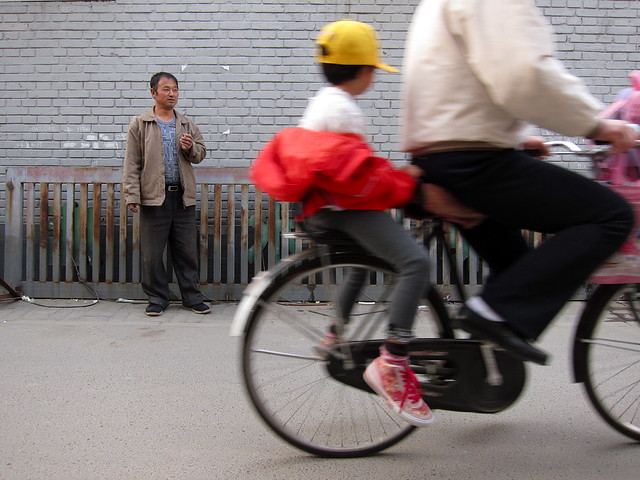

...or their pets thrown into the basket in front.
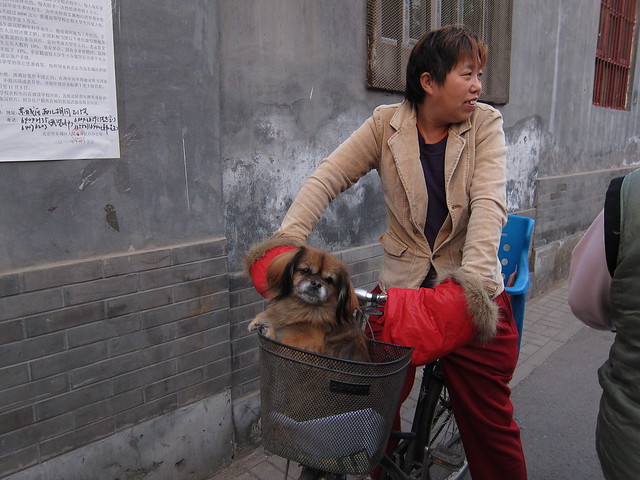
They sit outside chatting with their neighbors and commenting about the weather, their health, or others who pass by...

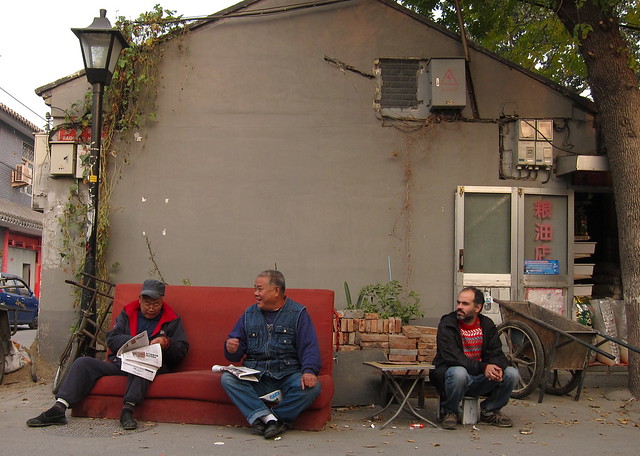
They buy and sell fruit and vegetables...
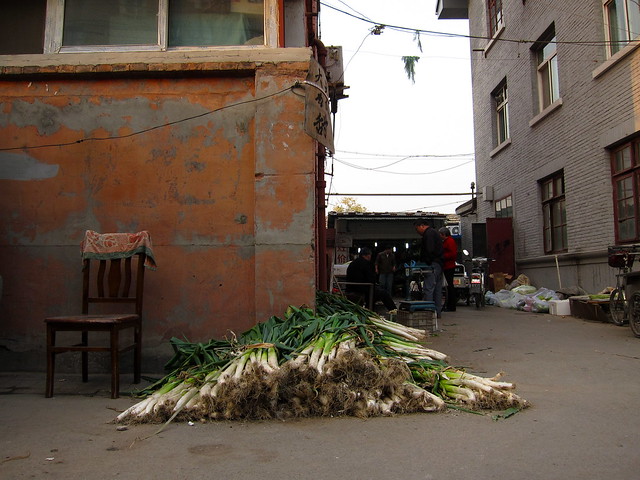

...and wander the narrow streets with their family members and friends...
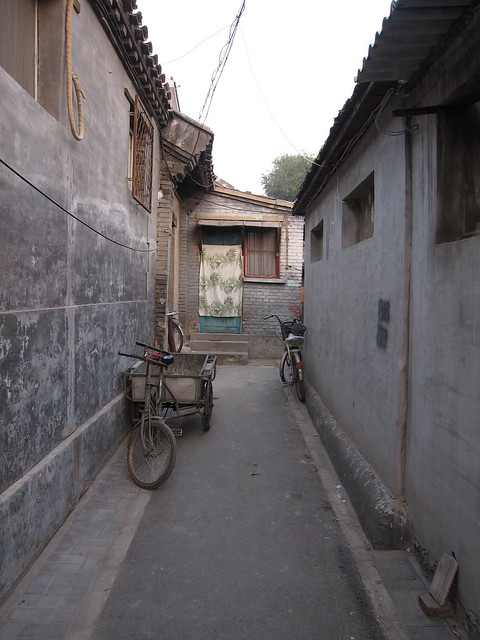

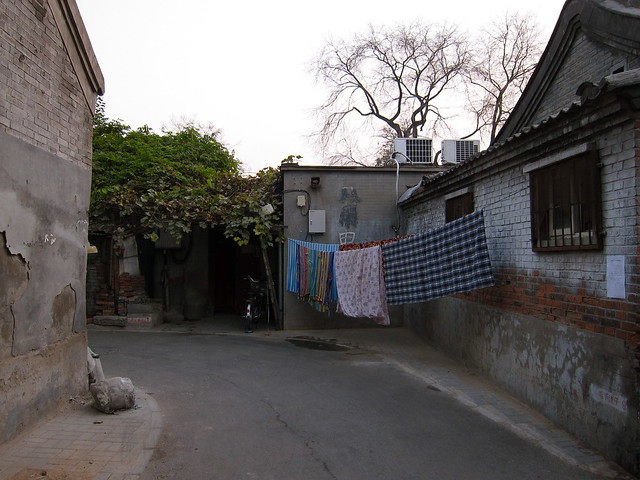
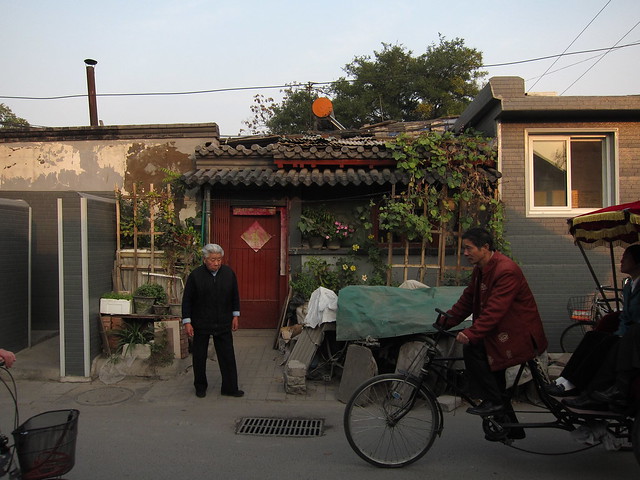
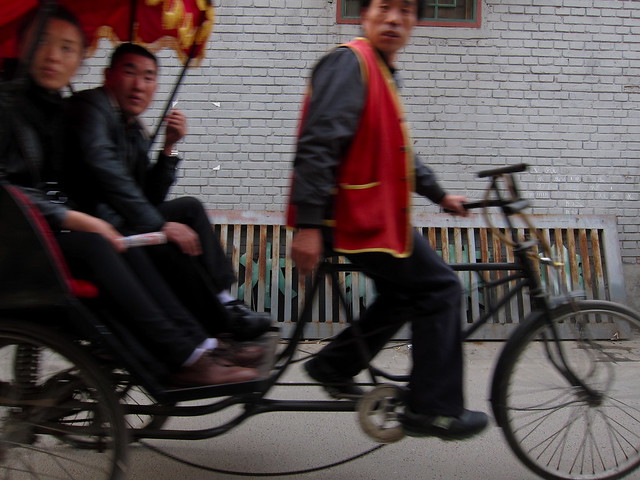
Walking through the hútòngs, it feels as though you have stepped back in time and both Xavier and I find these neighborhoods charming and fascinating. This particular warm fall afternoon was brimming with activity and we came across many friendly people.
Our afternoon started out at a family owned restaurant where we received exceptionally friendly treatment from the 老板 lǎobǎn (boss) and her son. We had stopped to ask if they knew of a dumpling house and were told...
我们的食物是比饺子更好... 里面来尝试好吧?
Wǒmen de shíwù shì bǐ jiǎo zǐ gēng hǎo... lǐmiàn lái chángshì hǎo ba?
Basically... "our food is better than dumplings, come in and try!" ;-) How could we say no?
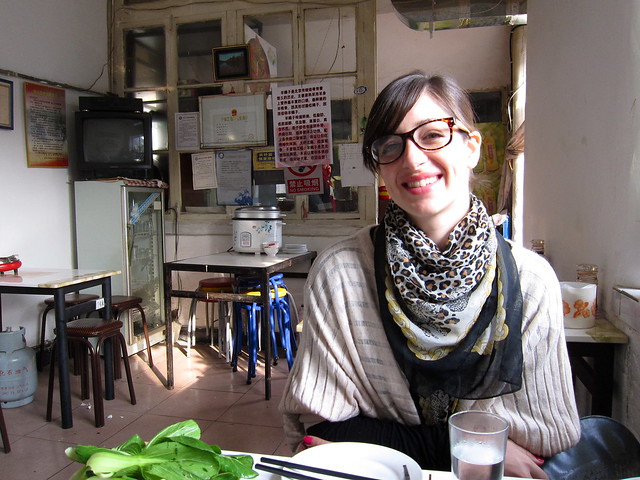
This restaurant specializes in a traditional Beijing soup which is served in a pot over a small gas burner set on the table. You are given a choice of a variety of veggies and noodles and meat and then you cook it yourself in the soup on your table. Delish!
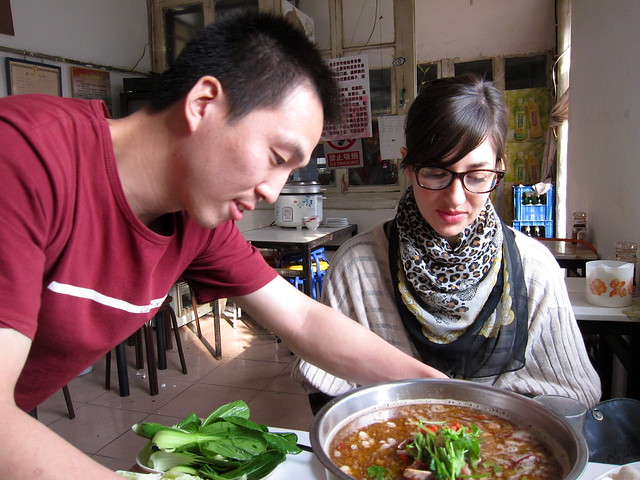

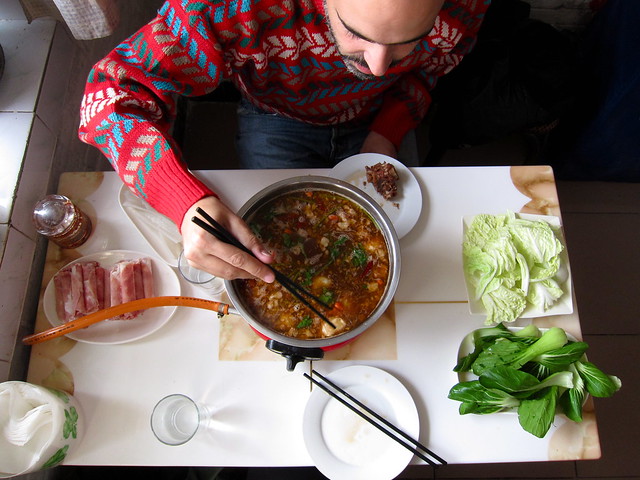
We ate an AMAZING meal, and just as we were finishing up, we were greeted by a neighbor who had come to say hello to her friend... the lǎobǎn. Seeing two foreigners she immediately came over and started chatting, not thinking to ask if we spoke or understood Chinese first. This is common practice in China... people just talk to you, they almost never ask if you can understand and sometimes when they realize that you can't communicate verbally, they write down what they are trying to express in Chinese characters! As if someone who can't speak or understand Chinese could actually read and write it!!!
Our new friend told us that her daughter has married a French man and was raising her family in Paris. Her two grandchildren who live in Paris, don't speak Chinese but had visited her in Beijing and she hopes to visit them this summer. She repeated this story 2 or 3 times until we understood and although it was a bit of a struggle, communication occurred... information was transfered... we spoke and understood Chinese! Youhooooo!!!
After this semi-successful exchange, she said something about French coffee, (we nodded in agreement without knowing what we were nodding to) she went home, and came back with a container of French coffee from her house. She showed it to us and commented on how great it was, and left. This whole interaction was a bit confusing and I wasn't sure if she wanted us to go to her home with her or if she was just showing us the package. A few minutes later she came back with two cups of coffee and it all became very clear. We did our best to show our appreciation and she smiled and laughed with us.

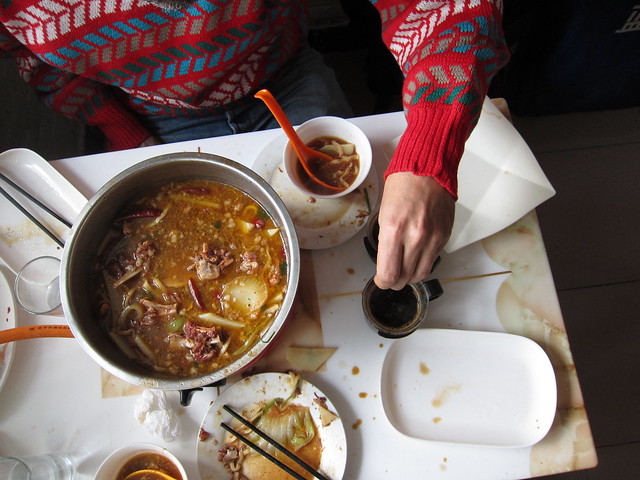
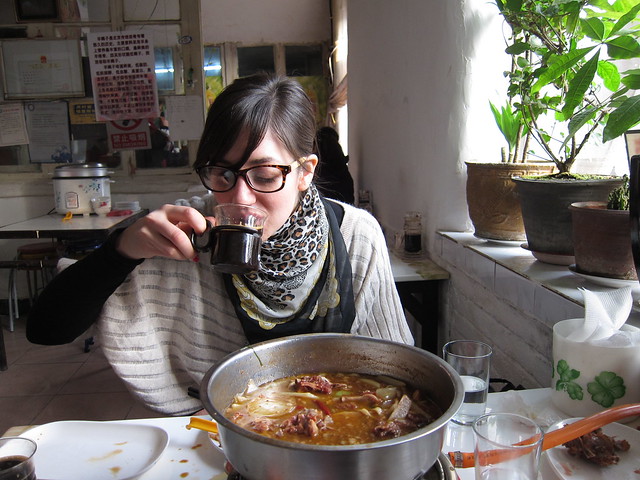
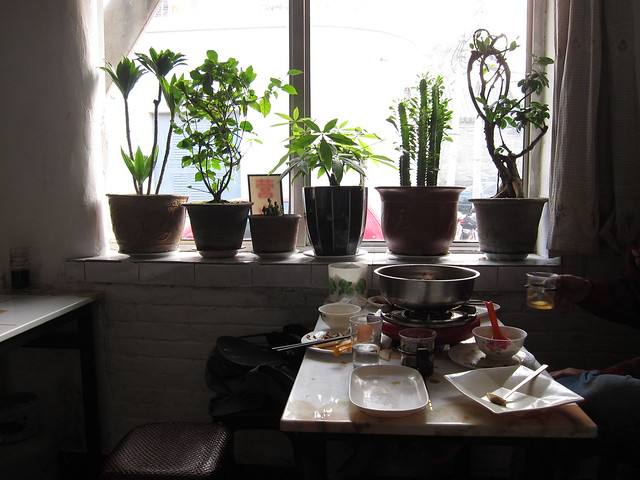
Now we were wired and ready to chat. We said goodbye to our new friend...
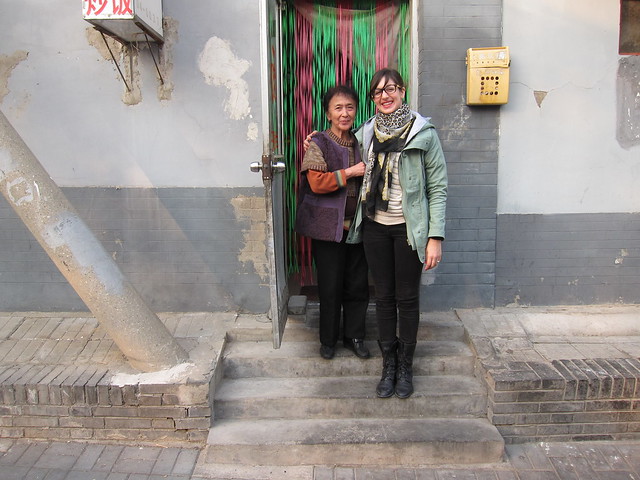
our friendly waiter...
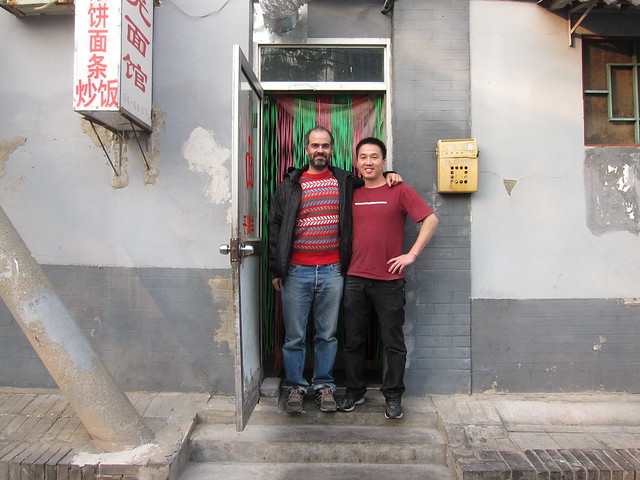
... and wandered the streets for the next 4 hours chatting with everyone who would talk to us. What an awesome day!!!
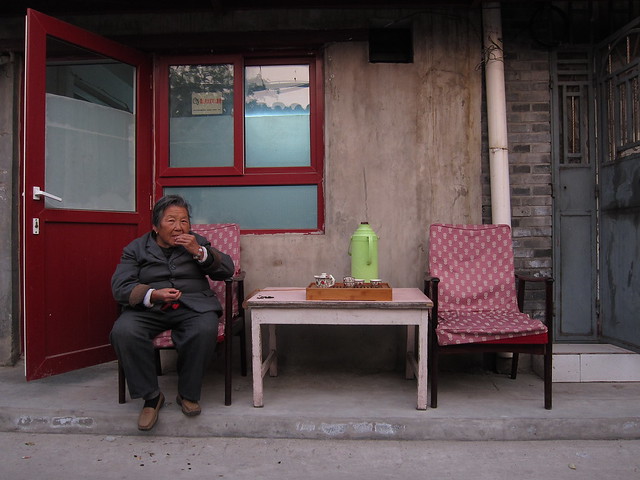
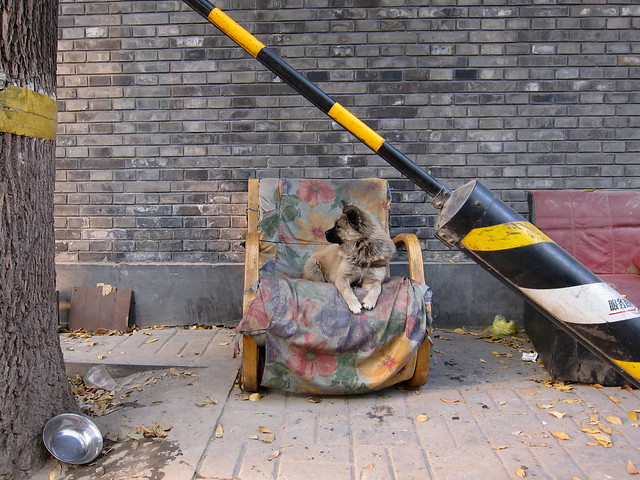
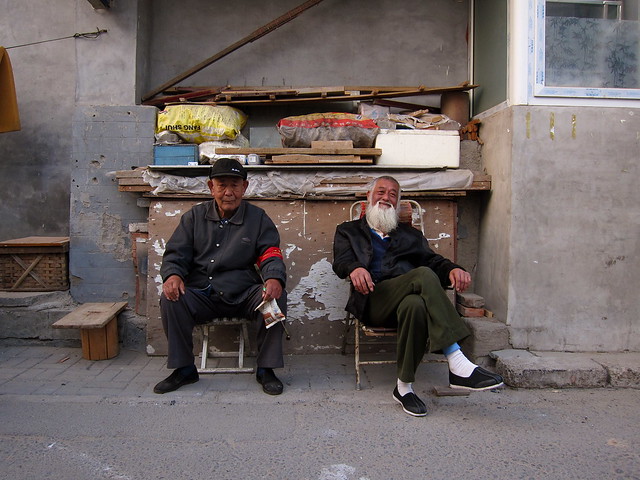

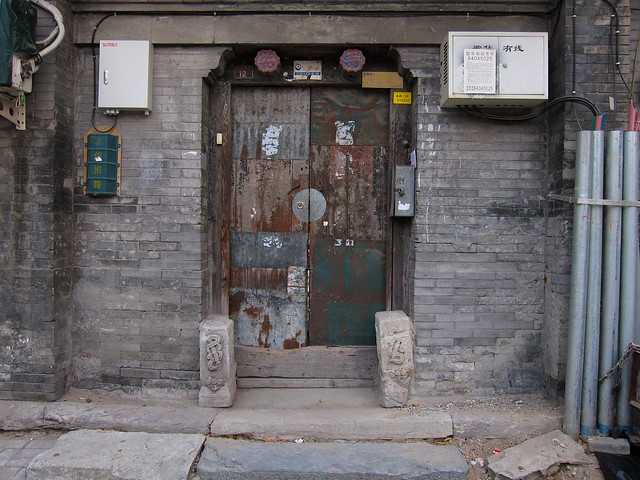
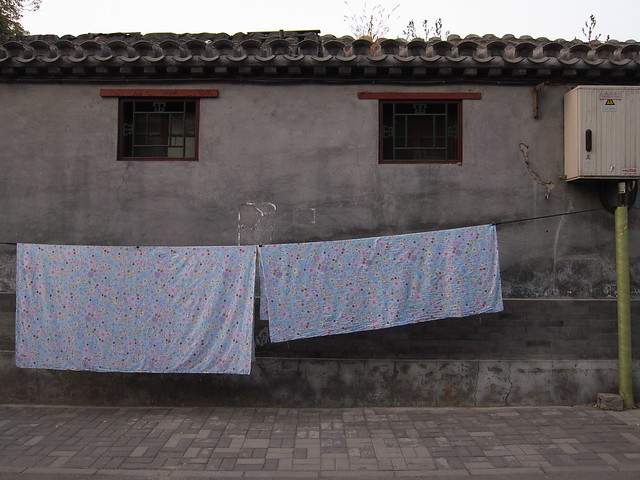

pero qué sopa
ReplyDeletey qué todo
uffff si... que todo!!! Vuelve en Mayo con todos y damos vueltas todos juntos!!! xoxoxo
ReplyDeletethe old is the new again
ReplyDelete... increible experiencia la vuestra, me mueeeroooo deee enviiiiiidiiiiaaa... †...plof!!
ReplyDelete